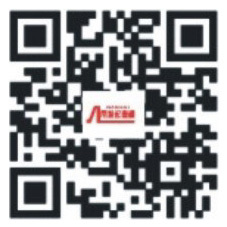Problems worthy of attention in load test of hoisting machinery
Release time:
2022-01-24
Load test is an important indicator to test the quality and safety performance of lifting machinery products. The load test can not only detect the deformation of the metal structure of the crane, such as the deflection value of the bridge crane, but also detect the effective situation of the crane safety device, such as the overload limiter, the movement protection of the moment limiter of the tower crane under the rated load state, etc.
Load test is an important indicator to test the quality and safety performance of lifting machinery products. Through the load test, it can not only detect the deformation of the metal structure of the crane, such as the deflection value of the bridge crane, but also detect the effective situation of the crane safety device, such as the overload limiter, the action protection of the moment limiter of the tower crane under the rated load state, etc. In short, the load test is extremely important to check the structural bearing capacity of the crane and its components, the welding and cracking of the crane, the permanent deformation, the loosening of the connection, the effectiveness of the safety device and the damage that affects the performance and safety of the crane.
In the process of testing and inspection of hoisting machinery, we found that many installation and manufacturing units, as well as relevant users, blindly carry out overload tests without in-depth research on the conditions and procedures of load tests. The result is often that the tests not only fail to achieve the expected purpose, but also bring damage to the structure of the crane, leading to new hidden dangers of accidents, economic disputes and so on. This paper expounds several important links such as the conditions, procedures and judgments of load tests in order to attract the attention of relevant units.
1 load test several important conditions do not have the case, easily lead to the occurrence of accidents
(1) Cranes whose product quality has not been demonstrated, especially those whose welds in the main stressed parts have not been detected and have no quality certificate.
(2) The installation is not finished, and the person in charge of the installation unit has not identified the crane handed over.
(3) Cranes with incomplete safety devices and inoperative cranes.
(4) Insufficient oil level in the lubrication part is prone to gear wear and damage, failure, and accidents.
(5) The connecting bolts of the main stressed parts are not fastened and the end of the wire rope is fixed to the crane that does not meet the requirements.
2 The procedure of the load test cannot be reversed, the safety judgment must be accurate, and the reliability index should be evaluated.
(1) The load test shall be carried out on the basis of the implementation of relevant safety measures, and shall be carried out according to the procedures of no-load test, rated load test, static load test and dynamic load test.
(2) No-load test, check the operation of each mechanism under no-load state, and check the accuracy and stability of each mechanism. The rated load test can only be carried out after the no-load test is qualified.
(3) The rated load test must be carried out at the specified position, such as the tower crane lifting the maximum rated lifting weight and the maximum rated lifting weight respectively in the corresponding range. When identifying the rated load of the crane, the maximum stress of the structure should be based on the type of dangerous stress zone as the basis for safety judgment.
(4) After the static load test, all parts of the crane shall not have problems affecting the performance and safety quality such as rupture and loosening of the connection. The action load test can be carried out after the static load test.
(5) After all the tests of the tower crane are completed, the reliability index shall be determined for the appraisal crane.
3 Summary
The load test shall be in accordance with the requirements of national standards, and the test process shall be formulated and detailed records shall be made for each step. Only by strictly controlling each link can the test be successfully completed. Identification of crane and normal production of the product factory inspection and installation and erection of the detection and normal use of product testing, acceptance, load test standards and requirements are different, should be distinguished.
Key words:
Previous
Related Cases
220KV transformer tank full picture
2022-01-24
Full picture of 200KV transformer tank
2022-01-24
220KV transformer tank full picture
2022-01-24
ZHONGSHAN ABB TRANSFORMER CO., LTD
2022-01-24
220KV transformer tank full picture
2022-01-24
Share
Service Hotline
Telephone:+86-0757-87655338
Fax: +86-0757-87655330
Crane Division E-mail:ng@nangui.com.cn
Transformer Division E-mail:ngfueltank@163.com
Address: No.6 Jujin Road, Xincun Machinery and Plastic City, Baini Town, Sanshui District, Foshan City

Sweep to learn more


